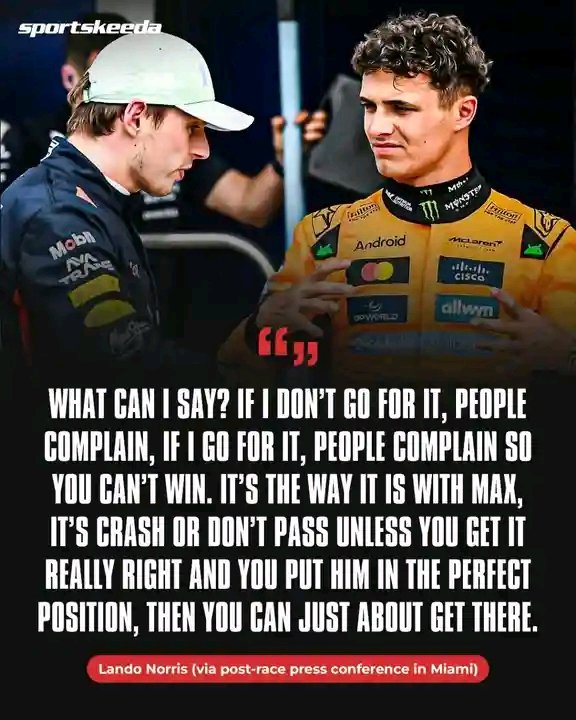Lando Norris emerged from the Miami Grand Prix with a damaged MCL60 and a renewed appreciation for the challenges of battling Max Verstappen. While the McLaren driver displayed impressive pace and aggressive driving throughout the weekend, his attempts to directly challenge the reigning world champion ultimately proved costly. Norris’s ambition to gain positions, particularly in close-quarters wheel-to-wheel combat with Verstappen, resulted in contact that left his car with significant damage, compromising his race performance and ultimately relegating him to a lower-than-expected finish. The incident served as a stark reminder of the delicate balance between assertive racing and the risk of incurring damage in the intense competition of Formula 1.
The Miami circuit, with its fast straights and challenging corners, provided a particularly unforgiving backdrop for such a confrontation. The high speeds and close proximity of the cars amplified the consequences of any minor contact, and Norris’s encounter with Verstappen highlighted the physical limitations of even the most advanced Formula 1 machinery when subjected to such intense pressure. While the McLaren team expressed their disappointment with the outcome, they also acknowledged the inherent risk involved in pursuing a top-tier driver like Verstappen, particularly when fighting for valuable championship points. Norris himself was candid about the incident, emphasizing the learning curve involved in directly competing against the current standard-bearer of the sport.
The incident also sparked a broader discussion surrounding the acceptable level of aggressiveness in Formula 1 racing. While overtaking maneuvers are an integral part of the sport’s excitement, there’s a fine line between hard but fair racing and reckless driving. The analysis of the incident focused on whether Norris’s actions were justified given the potential consequences, prompting debate within the paddock and among fans. Some argued that Norris was simply pushing his limits in a high-stakes race, while others pointed to the damage inflicted as evidence of overly aggressive driving. The resulting discussion highlighted the complex judgments drivers must make in fractions of a second under immense pressure.
Beyond the immediate impact on Norris’s race and championship standings, the encounter offered a valuable insight into the development of younger drivers aspiring to compete at the highest level of Formula 1. Norris, known for his aggressive driving style and ambition, learned a hard lesson about the strategic implications of challenging a driver of Verstappen’s caliber. The experience underlines the importance of calculated risk-assessment, particularly against drivers with significantly superior racecraft and experience. It demonstrated that pushing the limits is necessary for improvement, but only within a framework that understands the potential repercussions.
In conclusion, the Miami Grand Prix encounter between Lando Norris and Max Verstappen provided a compelling case study in the high-stakes world of Formula 1. It served as a reminder of the inherent risks and rewards associated with close racing, showcasing the skill and precision required to compete at the pinnacle of motorsport. While Norris paid a price for his ambition, the experience undoubtedly contributed to his growth as a driver, reinforcing the valuable lessons learned through both success and setbacks on the track. The incident will undoubtedly be analyzed and debated for some time, shaping the future strategies and driving styles of many aspiring racers.
